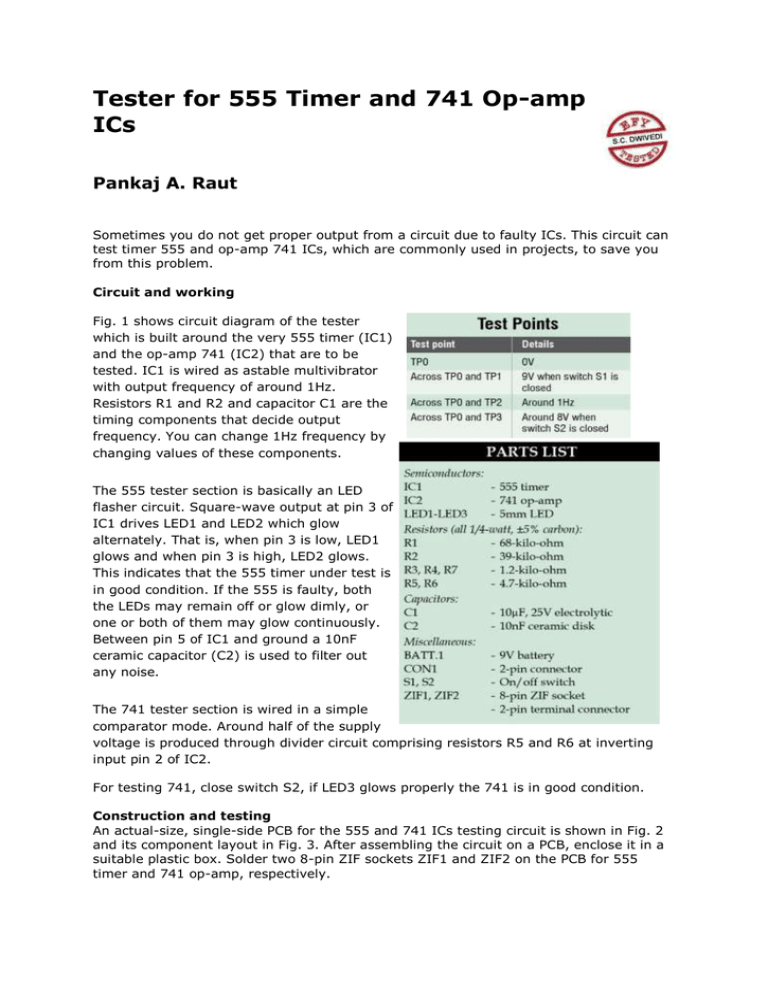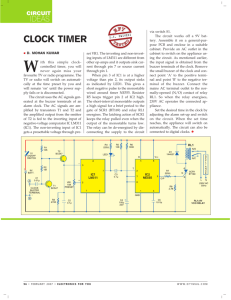File
advertisement

Tester for 555 Timer and 741 Op-amp ICs Pankaj A. Raut Sometimes you do not get proper output from a circuit due to faulty ICs. This circuit can test timer 555 and op-amp 741 ICs, which are commonly used in projects, to save you from this problem. Circuit and working Fig. 1 shows circuit diagram of the tester which is built around the very 555 timer (IC1) and the op-amp 741 (IC2) that are to be tested. IC1 is wired as astable multivibrator with output frequency of around 1Hz. Resistors R1 and R2 and capacitor C1 are the timing components that decide output frequency. You can change 1Hz frequency by changing values of these components. The 555 tester section is basically an LED flasher circuit. Square-wave output at pin 3 of IC1 drives LED1 and LED2 which glow alternately. That is, when pin 3 is low, LED1 glows and when pin 3 is high, LED2 glows. This indicates that the 555 timer under test is in good condition. If the 555 is faulty, both the LEDs may remain off or glow dimly, or one or both of them may glow continuously. Between pin 5 of IC1 and ground a 10nF ceramic capacitor (C2) is used to filter out any noise. The 741 tester section is wired in a simple comparator mode. Around half of the supply voltage is produced through divider circuit comprising resistors R5 and R6 at inverting input pin 2 of IC2. For testing 741, close switch S2, if LED3 glows properly the 741 is in good condition. Construction and testing An actual-size, single-side PCB for the 555 and 741 ICs testing circuit is shown in Fig. 2 and its component layout in Fig. 3. After assembling the circuit on a PCB, enclose it in a suitable plastic box. Solder two 8-pin ZIF sockets ZIF1 and ZIF2 on the PCB for 555 timer and 741 op-amp, respectively. Fig. 1: Circuit diagram of 555 and 741 ICs tester Fig. 2: An actual-size PCB for the testing circuit








